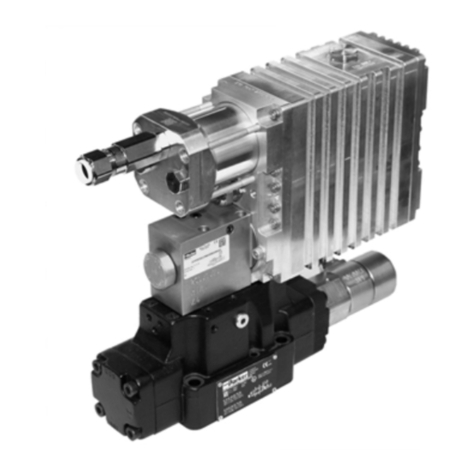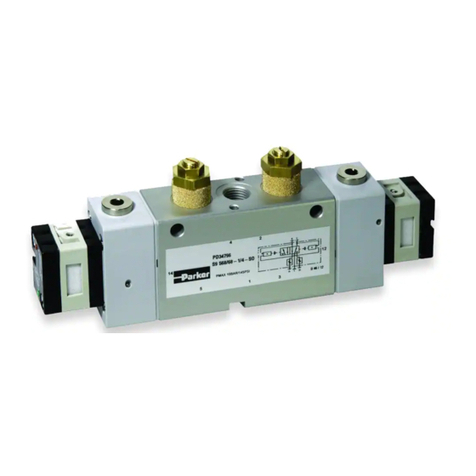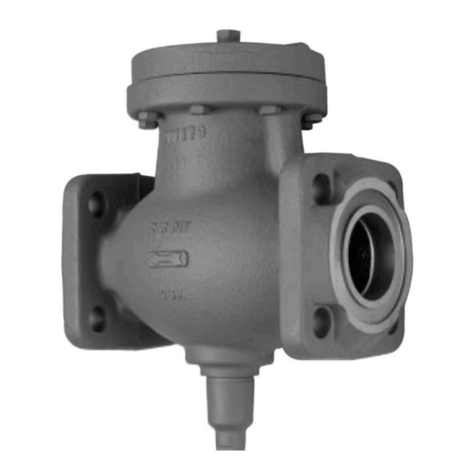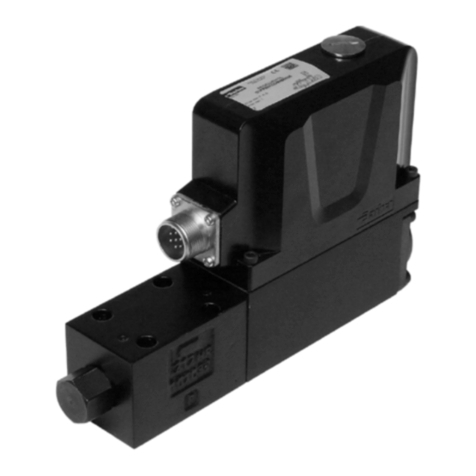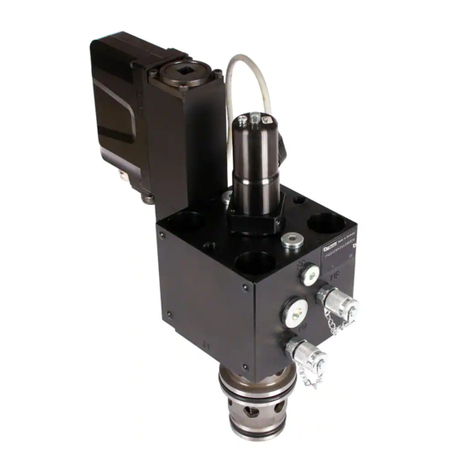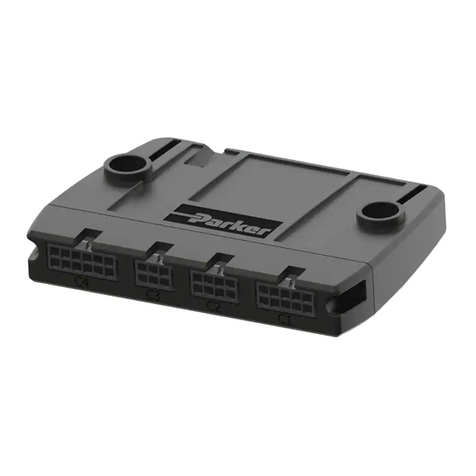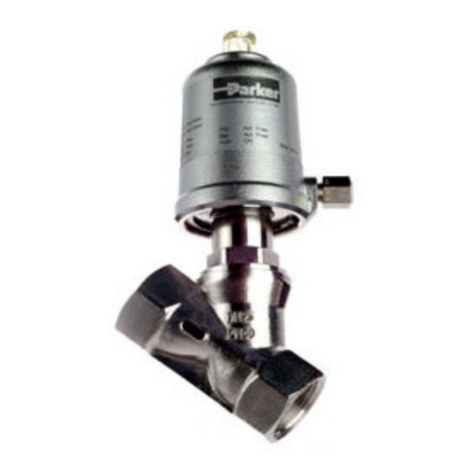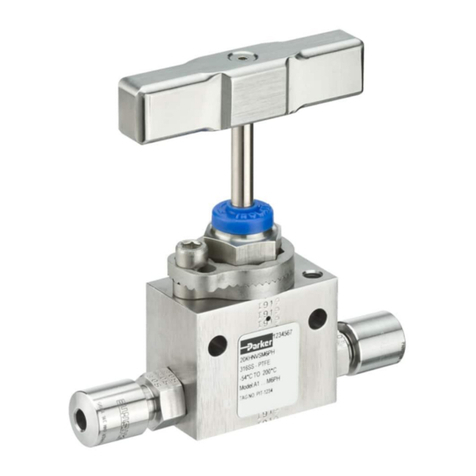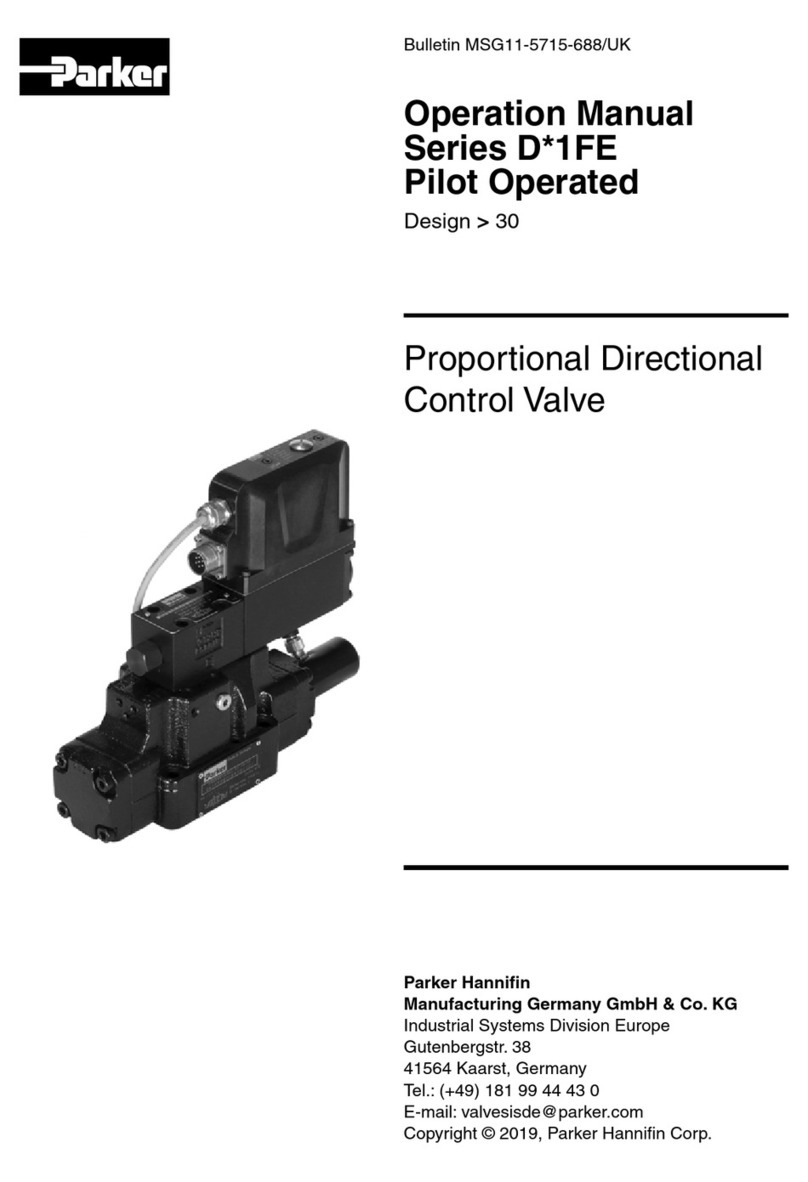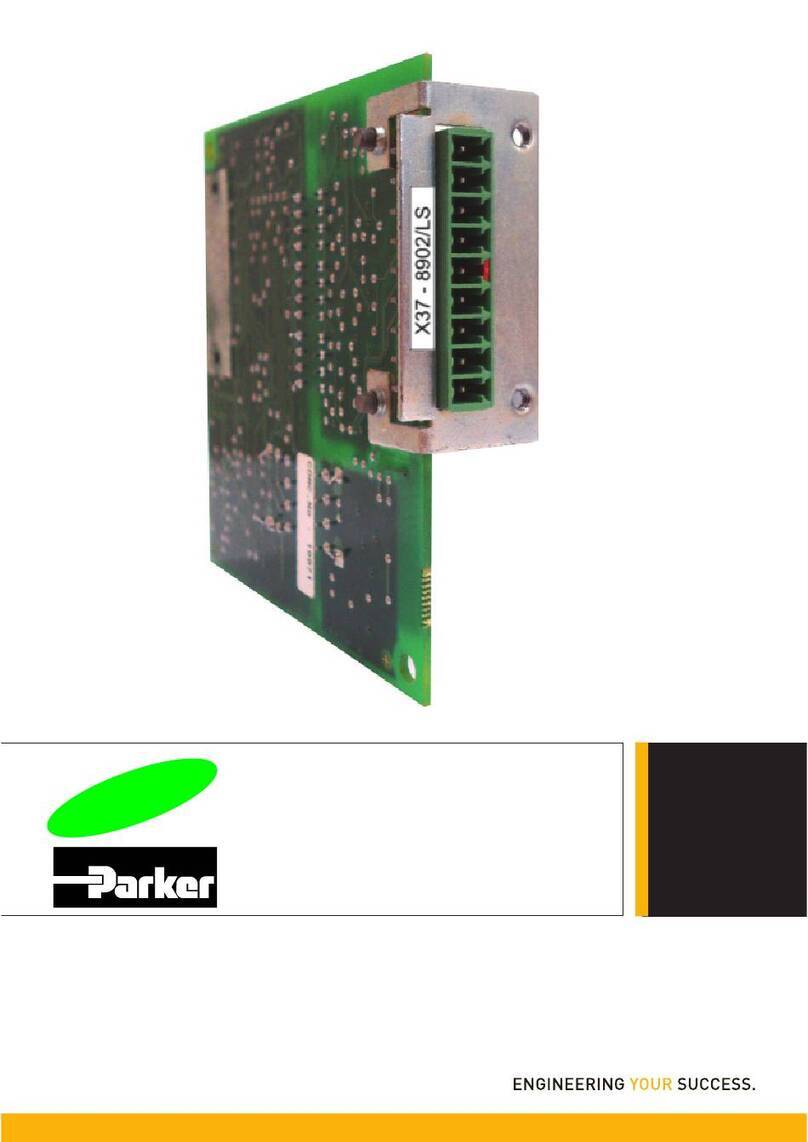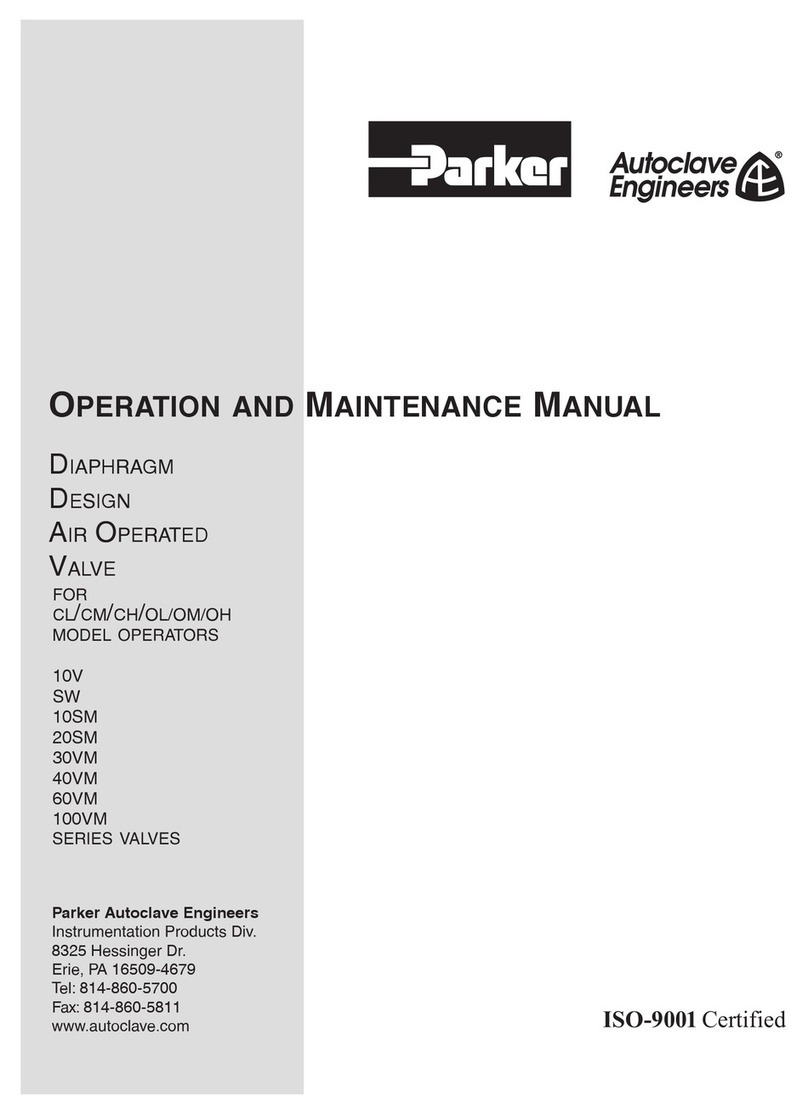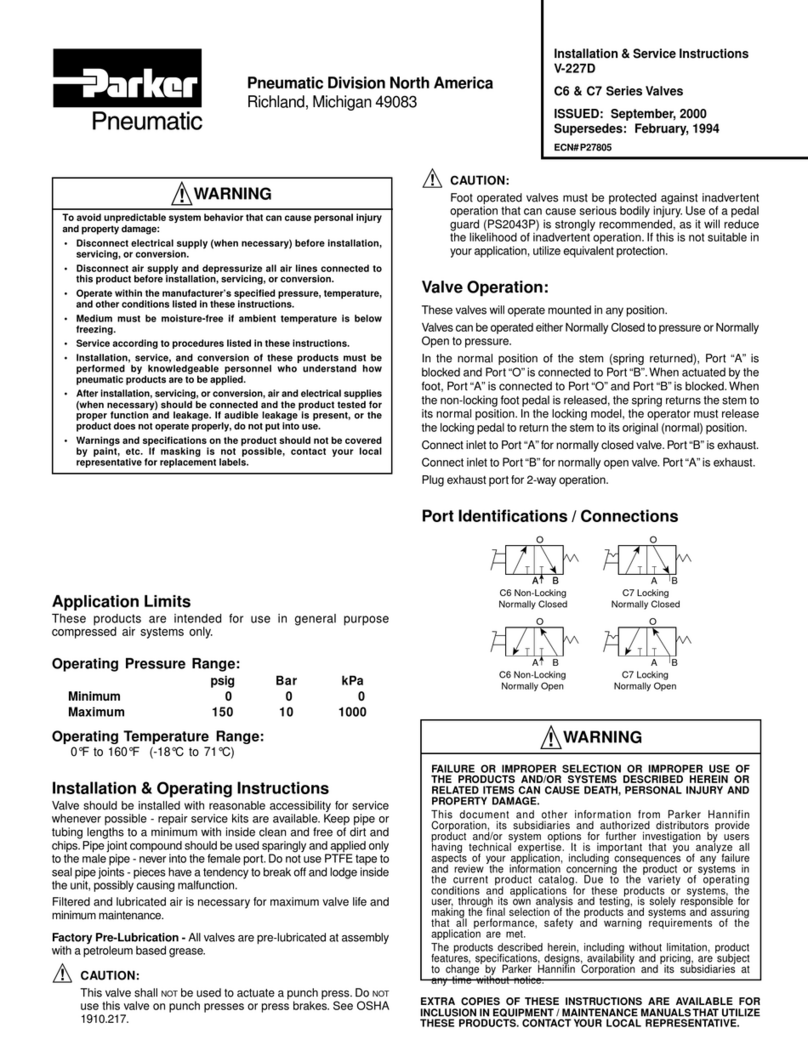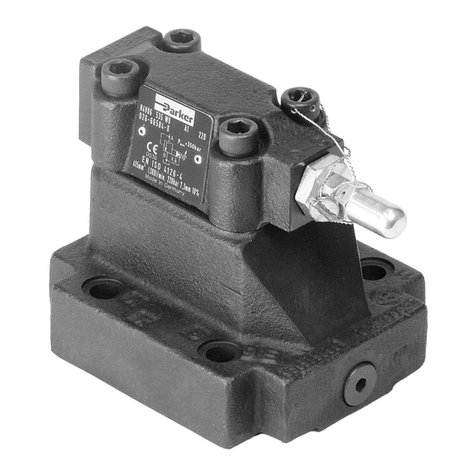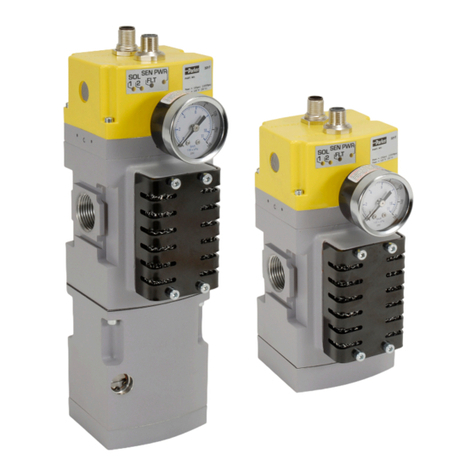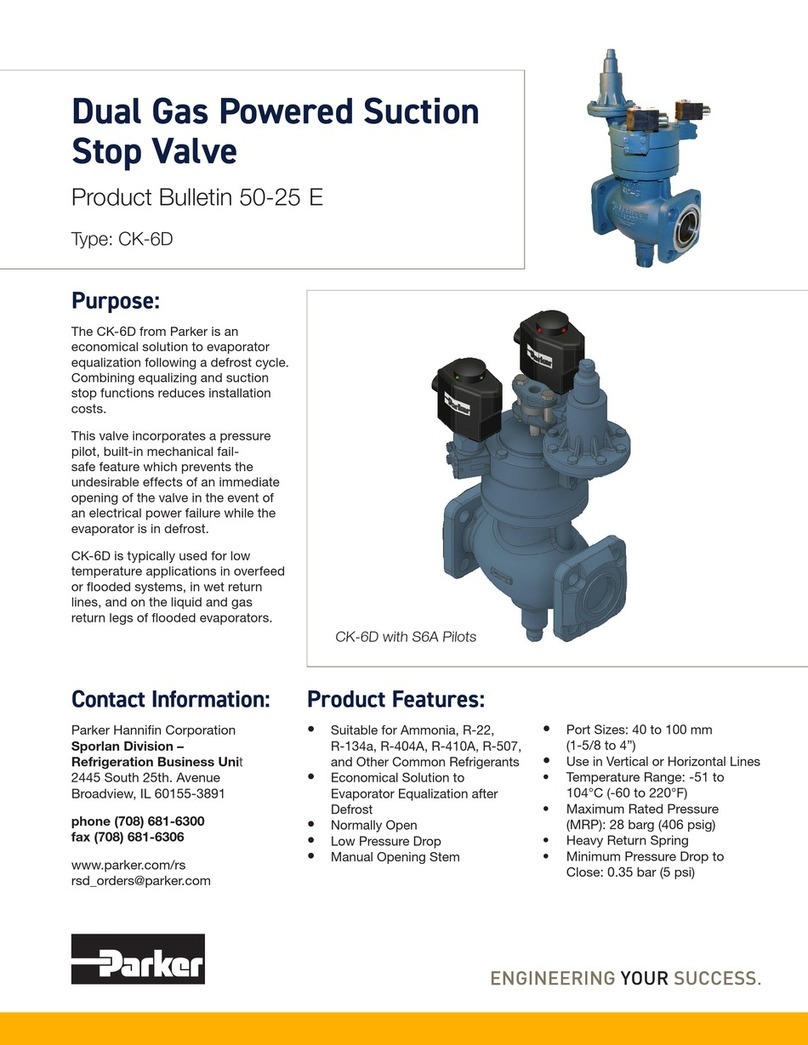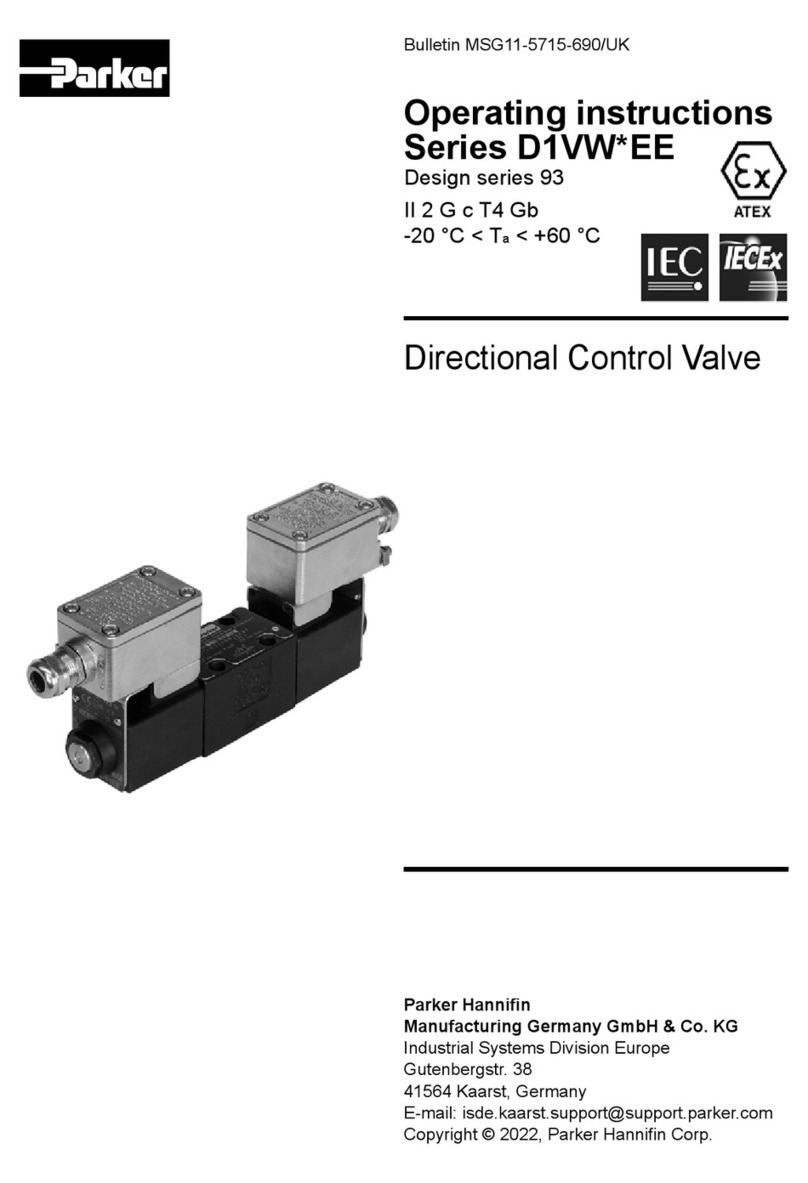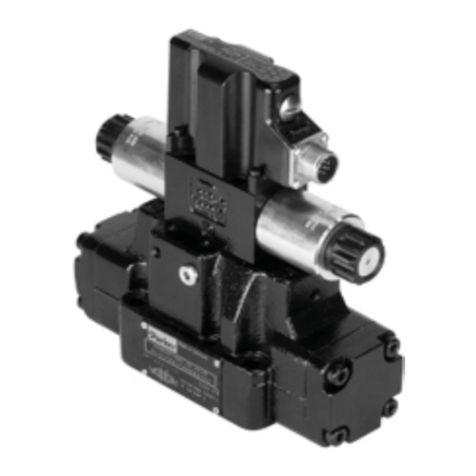
Refrigerating Specialties Division 2
“bleed down” solenoid in a defrost group of control valves
which includes a CK-5 (See Fig. 5 and 6). Without this gradual
equalization period, which generally takes one to two minutes,
the CK-5 will stay closed for a prolonged period of time as the
coil pressure slowly equalizes in series through the pilot
regulator, then through the piston bleed hole.
The ability of the CK-5 to stay closed during an interruption of
power, while an evaporator is in the process of defrosting, is
its single greatest advantage.Where power failures can occur
with any frequency, consideration should be given to this
unique valve. By design, a standard CK-2, or a competitive
valve with a similar design, would open immediately as residual
coil pressure surges through the valve should power to the
pilot solenoid suddenly be interrupted during a defrost. The
design of the CK-5 prevents this from occurring and prevents
the dangerous consequences to the system under these
conditions.
In the event the CK-5 pilot solenoid de-energizes due to a
power failure while the evaporator is in defrost, the defrost
coil pressure (typically at or about 70 psig for ammonia) will
continue to be transmitted through passage “N”, through the
pilot regulator and to the top of the piston.This pilot pressure
acts as a “closing” force acting upon the larger effective area
of the top of the piston, and will overcome the “opening” force
of coil pressure working against the underside of the piston.
The valve will therefore remain closed due to the greater
closing force until the coil pressure is equalized through the
piston bleed hole.
The larger the evaporator, and the greater its internal volume,
the longer this venting or equalization period will require. By
utilizing a bleed down solenoid in the control group during
the standard defrost sequence, the CK-5 will return to its open
position immediately after the equalizing period which is
controlled by the time clock.
ADJUSTMENT
The pilot regulator should be adjusted to maintain a minimum
set point of about 10 psi. This represents approximately 1/2
turn clockwise of the adjusting stem starting with the stem
turned completely out.
MANUAL LIFT STEM
If it is desired to hold open the CK-5 manually, remove #34
Sealing Cap and turn #27 Seat Lifting Stem inward as far as
possible. The valve cannot close now until the #27 Seat Lift
Stem is once again turned out.
STANDARD COIL *
120 V 60 HZ OR 110 V 50 HZ 204843
240 V 60 HZ OR 220 V 50 HZ 204844
208 V 60 HZ 204845
240 V 50 HZ 204846
QUICK DISCONNECT COIL *
120 V 60 HZ OR 110 V 50 HZ 204859
204 V 60 HZ OR 220 V 50 HZ 204860
208 V 60 HZ 204861
240 V 50 HZ 204862
* Used on 1-1/4" (32mm) to 4" (100mm) Port Size Valves
CK5 1-1/4"TO 4"
PRESSURE BEARING COM PONENTS
COM PONENT DESCRIPTION M ATERIAL
BODY DUCTILE IRON GGG 40.3
BODY,A2D DN DUCTILE IRON GGG 40.3
BONNET,A4W DUCTILE IRON GGG 40.3
COVER,TOP DUCTILE IRON GGG 40.3
ADAPTER,1-1/4CK5 DN DUCTILE IRON GGG 40.3
INSTALLATION
Protect inside of valve from dirt and chips during installation.
The CK-5 Suction Stop Valve may be installed on its side or
vertically upright in either vertical or horizontal pipe lines.
Figure 5 illustrates the installation of the 32mm through 100mm
(1-1/4" through 4") port size valves in a horizontal pipe line.
Figure 6 illustrates the installation of the 125mm and 150mm
(5" and 6") port size CK-5 stop valves in a horizontal pipe line.
A bypass equalizing solenoid valve, a requirement with any
size CK-5, ‘is also shown. The remote discharge gas supply
solenoid used with the larger 5" and 6" valves, the R/S type
S8F, is a gravity closing valve and must be mounted in a
horizontal line with its manual opening stem in a vertical
position as shown.
Never install the valve with its pilot section directly beneath
the main valve.The direct mounted pilot solenoid on the 32mm
through 100mm (1-1/4" through 4") port size valves should be
maintained above the centerline on a horizontal pipe.
When used on a suction or wet return line, the arrow on the
valve should point in the direction of normal fluid flow. When
used on either gas or liquid legs of a flooded evaporator, the
arrow on the valve body should point from the evaporator to
the surge drum.
ELECTRICAL
The pilot solenoid used on the 32mm through 100mm (1-1/4"
through 4") port size CK-5 stop valves, type S6B, is unique to
the Refrigerating Specialties line of control valves. In addition,
the pilot light assembly used with the S6B, the R/S type PLT-5,
is unique to the product line.Like the R/S type PLT-2, the PLT-5
is designed to meet NEMA 4 (watertight) requirement for
outdoor use. However, unlike other pilot lights available from
R/S (types PLT-1 and PLT-2), the PLT-5 is wired directly to
line voltage. Please refer to R/S product bulletin 60-30 for
additional information regarding the PLT-5 pilot light assembly.
The Refrigerating Specialties Division’s molded, water
resistant, Class “H” solenoid coil is designed for long life and
powerful opening force. The standard coil housing meets
NEMA 3R and 4 requirements. This sealed construction can
withstand direct contact with moisture and ice. By definition,
Class “H” coil construction will permit coil temperatures, as
measured by resistance method, as high as 180°C. (356°F.)
Final coil temperatures are a function of both liquid and
ambient temperatures. The higher fluid temperatures require
lower ambient temperatures so the maximum coil temperature
is not exceeded. Conversely, low fluid temperatures permit
higher ambient temperatures.
A solenoid coil should never be energized except when
mounted on its corresponding solenoid tube.
The solenoid coil must be connected to an electrical line with
volts and Hertz the same as stamped on the coil The supply
circuits must be properly sized to give adequate voltage at
the coil leads even when other electrical equipment is
operating. The coil is designed to operate with line voltage
from 85% to 110% of rated coil voltage. Operating with a coil
voltage above or below these limits may result in coil burnout.
Also, operating with a coil voltage below the limit will definitely
result in lowering the valve’s maximum opening pressure
differential. Power consumption during normal operation will
be 18.2 watts or less,
